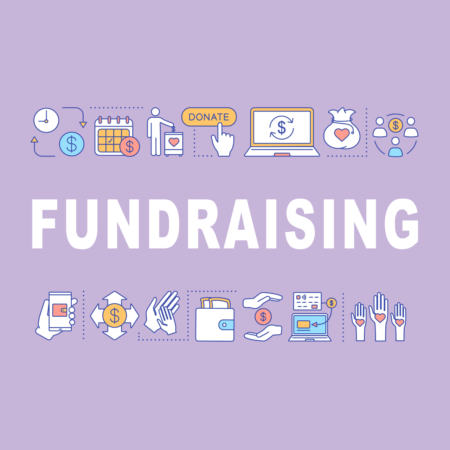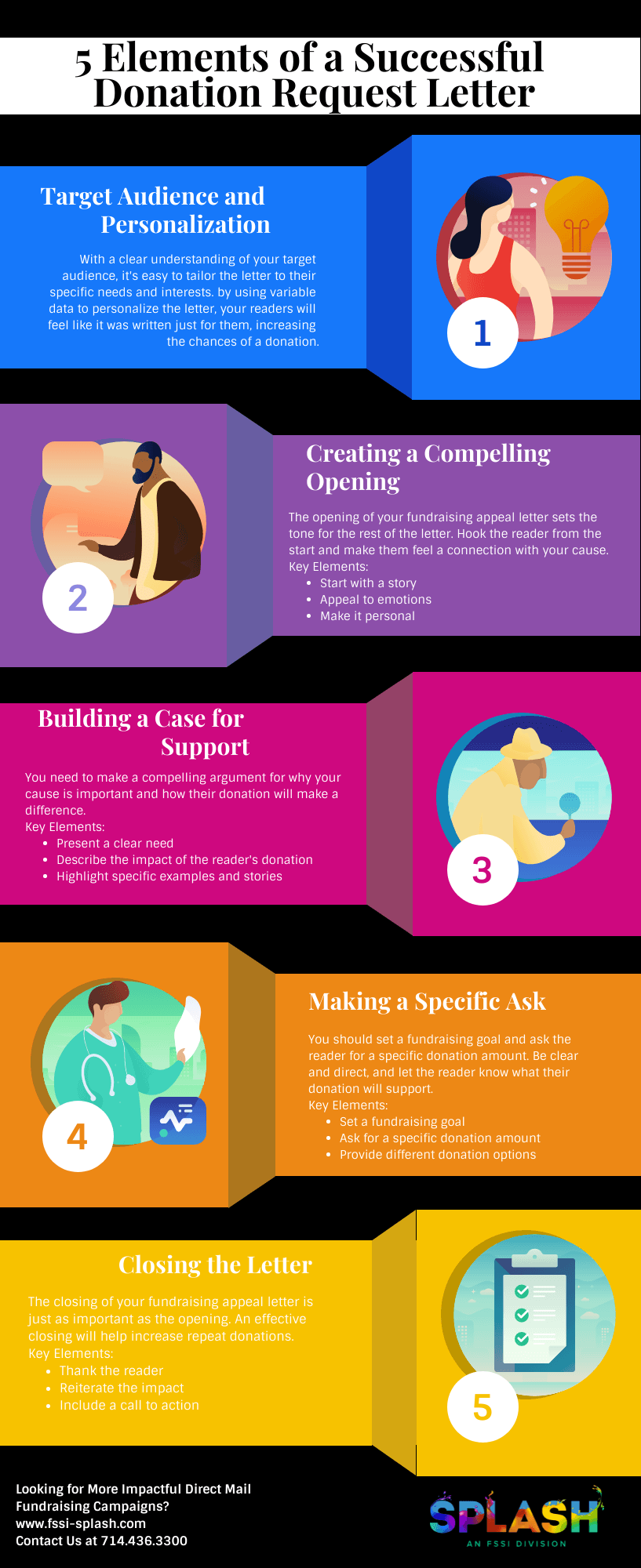
- Categories:
- Direct Mail Fundraising,
- Direct Mail Guides,
- Nonprofit Direct Mail,
What separates a winning fundraising appeal letter from one that fails to produce any donations? Simply, the quality of content within the letter. Of course, there is much more to it than that but without the key elements of an effective appeal letter, it just isn’t as … well, effective.
It’s all about the basics. While there are many advanced strategies utilizing donor data and segmentation to personalize the content of each letter, a quality letter will always showcase the common best practices and key elements – which are the foundations of a compelling appeal letter. An effective letter should be personalized, persuasive and make a strong case for why the reader should donate.
As you read on, we’ll outline the essential elements of a successful fundraising appeal letter and provide tips for writing an attention-getting letter that not only resonates with your target audience but gets them to act.
Statistics About Donation Request Letters*
Before we jump in, here’s some food for thought…
- Response rates: According to a study by M+R, the average response rate for direct mail fundraising appeals is 2.1%.
- Personalization: Personalized letters have a higher response rate than generic letters. A study by the Data & Marketing Association (previously Direct Marketing Association) found that personalized direct mail had a response rate of 4.25%, compared to 1.6% for non-personalized direct mail.
- Timing: The timing of your fundraising appeal letter can also impact response rates. Research has shown that the best time to send a direct mail appeal is in the first two weeks of December. (31% of annual giving happens in December).
- Length: The length of your letter can also impact response rates. Research has shown that shorter letters tend to have higher response rates than longer letters (i.e., getting to the point much quicker)

The Donation Request**
The donation. It’s the reason for the letter, so it’s quite important. The amount you ask for in your outreach can also impact response rates – and why not? You ask for too much and your letter gets thrown away or deleted… you ask for too little and you’ve missed an opportunity to maximize the donation amount.
Here are three effective ways to accomplish the donation goal:
- Ask for a donation based on the donor’s previous gift (with a slight increase, such as 10%).
- Provide a donation range (either based on the donor’s previous gift or to give a new donor guidance on typical donation amounts).
- Include different donation options that specify what each gift will accomplish (such as what that dollar amount will provide for donation recipients).
Target Audience and Personalization
One of the most important aspects of a fundraising appeal letter is to identify your target audience. To whom are you writing? What are their interests, values and motivations? And how are you going to reach them?
This is where a data-driven strategy comes into play. Starting with a targeted list, segmenting the contacts into groups for a more personalized donation experience, and including variable content and graphics.
Once you have a clear understanding of your target audience, it’s easy to tailor the letter to their specific needs and interests. And by using variable data to personalize the letter, your readers will feel like it was written just for them – and increase the chances of a donation.
Creating a Compelling Opening
The opening of your fundraising appeal letter is crucial because it sets the tone for the rest of the letter. You need to make sure you hook the reader from the start and make them feel a connection with your cause. Here are some tips for creating a compelling opening:
- Start with a story – Share a real-life story that highlights the impact of your cause.
- Appeal to emotions – Use emotions to connect with the reader and make them feel invested in your cause.
- Make it personal – Use personal anecdotes or examples that relate to the reader’s experiences.
Building a Case for Support
Once you have the reader’s attention, it’s time to build a case for why they should donate. You need to make a compelling argument for why your cause is important and how their donation will make a difference. Here are some elements to include in your case for support:
- Present a clear need – Explain why your cause is important and what problem you are trying to solve.
- Describe the impact of the reader’s donation – Show how their donation will help make a difference.
- Highlight specific examples and stories – Use real-life examples and stories to illustrate the impact of your cause.
Making a Specific Ask
Once you have made your support case, it’s time to make a specific ask. You should set a fundraising goal and ask the reader for a specific donation amount. Be clear and direct, and let the reader know what their donation will support. Here are some tips for making a specific ask:
- Set a fundraising goal – Specify the amount you hope to raise and why you need it.
- Ask for a specific donation amount – Let the reader know how much you are asking for and why.
- Provide different donation options – Offer different donation amounts to accommodate different budgets.
Closing the Letter
The closing of your fundraising appeal letter is just as important as the opening. You need to thank the reader for their time, reiterate the impact of their donation, and include a call to action. Here are some tips for closing the letter:
- Thank the reader – Show gratitude for their time and consideration.
- Reiterate the impact – Remind the reader of the positive impact their donation will have.
- Include a call to action – Encourage the reader to take action by donating.
The Essential Elements of a Successful Fundraising Appeal Letter
Now that you understand who you are writing to and have your most important points drafted, it’s time to organize all points in a clear and persuasive format. Ensure your donation request letter includes the following information:
- Introduction – Start with a brief introduction that explains the purpose of the letter and the organization making the request.
- Background – Provide some context and background information about the organization, its mission and its goals.
- Request – Clearly state the request for a donation, including the amount requested and the purpose for which the funds will be used.
- Benefit – Highlight the benefits of donating, both for the donor and for the organization or cause being supported.
- Urgency – If applicable, convey a sense of urgency or importance for the request.
- Ways to donate – Ensure to include a clear call to action with specific details on how to donate – oftentimes providing multiple options to meet the recipient’s preferred donation methods (e.g., online, phone, mail, etc.)
- Contact information – Provide contact information for the organization, including a mailing address, phone number and email address, as well as a website for additional research.
- Closing – End with a closing that expresses gratitude for the recipient’s consideration and reiterates the support request.
- Signature – Close the letter with a personal signature from a representative of the organization.
Formatting Your Donation Request Letter
The format and design of your donation request letter can impact the success of your fundraising efforts. A cluttered or difficult-to-read letter will likely turn potential donors away, so it’s important to put effort into making it visually appealing.
Here are key elements to include in your letter’s design:
- Letterhead – Display your nonprofit’s name, contact details and logo prominently so the sender immediately clear (and recognizable).
- Graphics – Consider adding images, such as pictures of beneficiaries or graphics, to make the letter more visually appealing and engaging.
- Typography – Use a clear, easily readable font and make sure the font size is large enough (at least 12 pt font).
- Colors – While you should use black for primary text, the use of strategically-placed color will highlight important information, such as numbers, dates or call to action, generating a higher response rate with content that stands out.
- Envelopes – The envelope can make a significant impact as the first impression your letter makes. Consider including an eye-catching call to action or printing the text in your official brand colors to catch the reader’s attention.
Crafting a Strong Subject Line
If you’re sending the fundraising appeal letter via email, the subject line is crucial because it’s the first thing the reader will see. It should be short, catchy and accurately reflect the content of the letter. If the subject line is not interesting or relevant, the reader may not even open the letter. Here are some tips for writing an effective subject line:
- Keep it short and sweet – Aim for no more than 10 words.
- Make it relevant – Ensure the subject line accurately reflects the content of the letter.
- Be descriptive – Give the reader an idea of what they can expect from the letter.
- Ask a question – Use a question to engage the reader and encourage them to open the letter.
Donor Follow-up
Following up with donors is an important part of any fundraising strategy. It helps to maintain the relationship with the donor and shows them that their support is valued. Here are some ways to follow up with donors:
- Thank them – Send a thank-you note or email to acknowledge their donation.
- Provide updates – Keep the donor informed of how their donation is being used and the impact it is having.
- Invite them to events – Invite the donor to events or activities related to your cause.
Bringing All the Letter Elements Together for Fundraising Direct Mail Success
Writing an effective fundraising appeal letter requires careful planning and attention to detail. By targeting the right audience, personalizing the letter, making a compelling case for support, and following up with donors, you can increase the chances of success and raise the funds you need to support your cause.
Remember to be clear, direct and persuasive in your letter, and always show gratitude to your donors. With these tips in mind, you’ll be well on your way to writing an effective fundraising appeal letter that will increase response rates and generate crucial nonprofit donations.
Contact us today at (714) 436-3300 If you need assistance with donor list segmentation, data management, 1:1 personalization or high-quality print and mail. Our nonprofit expertise can help elevate your fundraising efforts, reaching more donors and growing your cause.
Sources:
*https://mrbenchmarks.com/
https://donorbox.org/nonprofit-blog/end-of-year-giving-statistics
** https://bloomerang.co/blog/upgrade-nonprofit-donors-using-suggested-donations/
